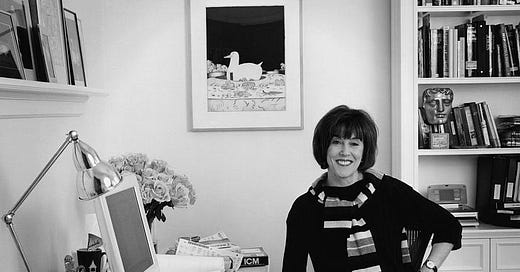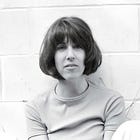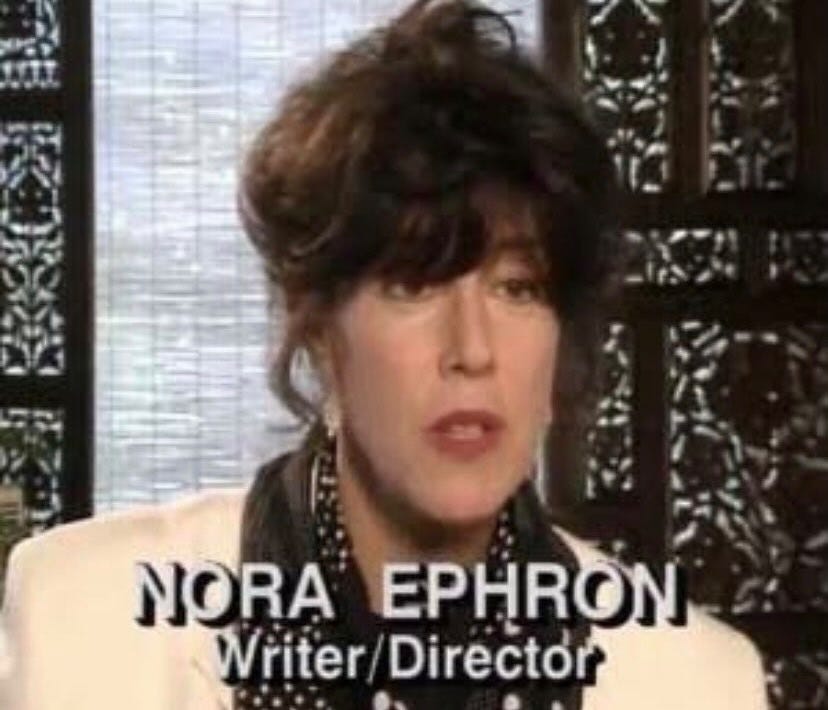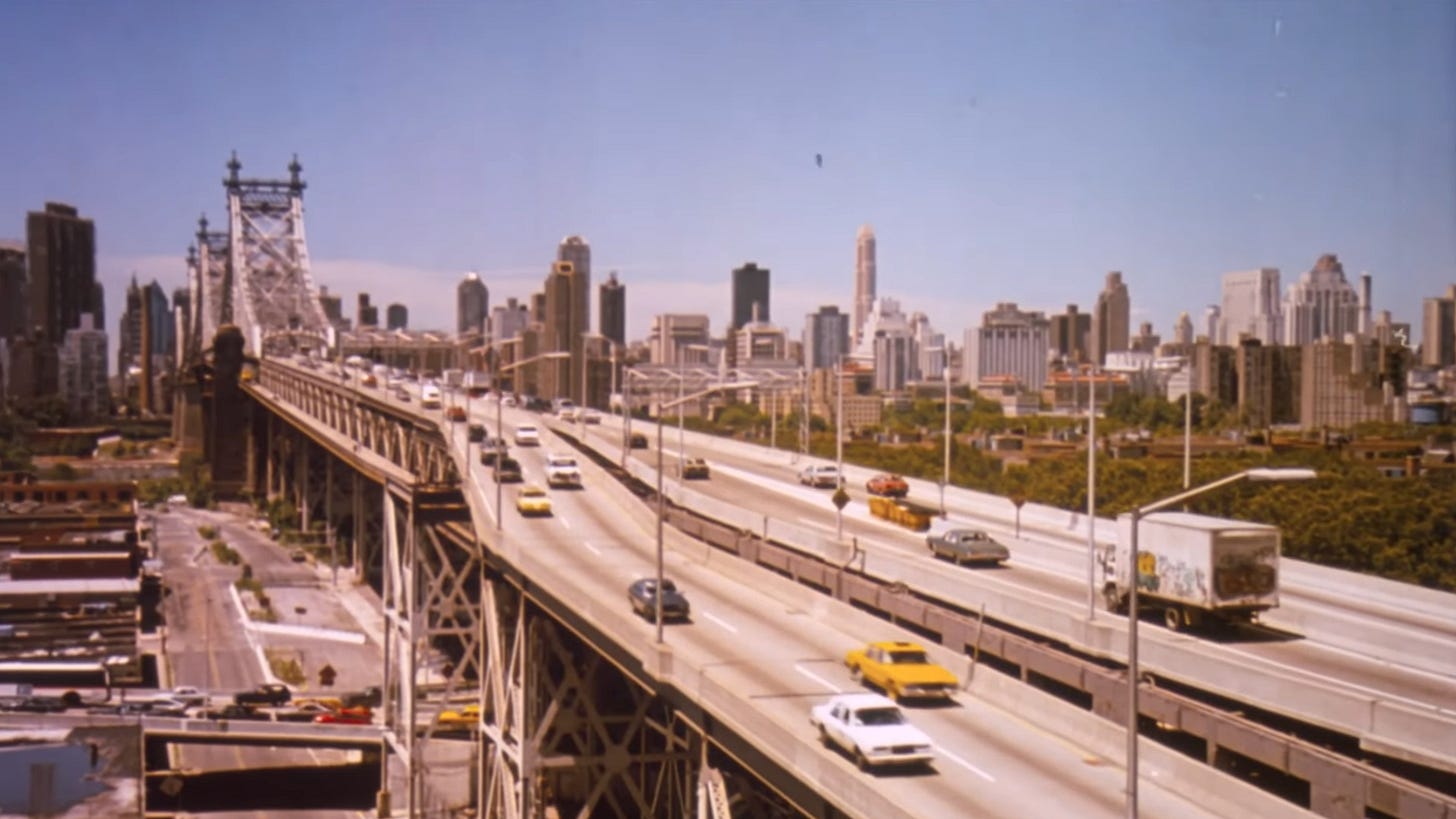If you are after a refresher of Nora’s New York story so far, here are Parts 1, 2 & 3:
And now on to Part 4!
As mentioned at the end of Nora Ephron: A Born New Yorker - Part 3, Nora’s love affair with the Apthorp was over and she and Nick were preparing to move to the Upper East Side. In Moving On, Nora described the UES as “a neighbourhood that on some level I had spent more than twenty years thinking of as the enemy of everything I held dear.”
Nora and Nick moved to an apartment building at 136 East 79th Street, and the woman who had made a religion of the Upper West Side was surprised to find that “within hours of moving in, I was home. I was astonished. I was amazed. Most of all, I was mortified. I hadn’t been so mortified since the end of my second marriage.” Nora found a great many things to appreciate about her former enemy, but didn’t exactly feel that she and the Upper East Side were MFEO “… I am never going to dream about this new apartment of mine. At least I haven’t so far. And I am never going to feel romantic about the neighbourhood - although I have to say that it’s much more appealing than I would have guessed… But it’s not love. It’s just where I live.” The UES might not have been one of the loves of her life, but she and Nick happily lived there until her passing in June 2012.
The 90s was also a time of change for Nora in terms of her career. She wrote the screenplay for My Blue Heaven (1990) before embarking on her directing career. This film has an interesting link to Goodfellas, as it was also based on the life of Henry Hill. Through the course of writing Wiseguy: Life in a Mafia Family, Nick and Henry formed a friendship of sorts, and Hill would often call the Ephron/Pileggi residence. If Nick was unavailable, Nora would take over the phone chat duties. Unbeknownst to Henry Hill, during these calls Nora was living up to the Ephron motto of ‘everything is copy’ and was collecting information about his time in witness protection to use in her screenplay. My Blue Heaven (Dir. Herbert Ross) was released in 1990, one month before Goodfellas, and Hill was surprised to find that not only was the film about him, but that it contained many of the anecdotes he’d shared with Nora.
Nora had always considered directing, but after her successful working partnerships with collaborative directors like Rob Reiner, Mike Nichols and Susan Seidelman she was happy to continue working solely as a screenwriter. However, working with director Herbert Ross on My Blue Heaven made her want to make the leap to directing. Nora recounted this experience in Conversations at the American Film Institute with the Great Moviemakers: The Next Generation, saying “I realized that if you make movies with Rob Reiner and they’re big hits, you don’t necessarily want to direct, but when a script of yours that you liked it just destroyed in your opinion - of course, it’s always your opinion - the writer always thinks he or she had nothing to do with it. I looked at My Blue Heaven and thought, ‘Well, I could have screwed that up just as badly as Herbert Ross did and he got paid [$2.5 million], so I might as well think about directing.”
Nora made her directing debut in 1992 with This Is My Life, based on Meg Wolitzer’s 1988 novel This Is Your Life. The screenplay was the first writing collaboration between Nora and her sister Delia Ephron. Though the film is set in New York, the majority of the filming took place in Canada. Despite this Nora wanted the New York of the film to feel as authentic as possible, even making sure that the creaming soda bottles were the correct NY brand, Dr Brown’s Soda. Her requests for this particular soda went unheeded by the production designer, so they were replaced (the film’s producer, and Nora’s long-time friend, Lynda Obst described herself as Nora’s broom.).
Tom Hanks was impressed with This Is My Life, especially the depiction of traveling from New Jersey to New York, “The thing that completely [blew my mind] – I just thought, this is impossible. I've never seen this in a film before – a geographically correct montage. Julie Kavner moves her two kids from their small place out in the suburbs to the Upper West Side of Manhattan. And [Nora] showed the geography: She showed the street. She showed the 59th Street bridge. She showed the right turn you've gotta make, the left turn you've gotta make, which avenues you went up, how you get across the park, how you come down… And I just thought that was special.”
Nora followed up This Is My Life with 1993’s Sleepless in Seattle, the first Nora Ephron Cinematic Universe pairing of Meg Ryan and Tom Hanks. The end of the movie pays homage to Nora’s New York story and love of the city through the inclusion of The Rainbow Room at Rockefeller Center (where she married her first husband Dan Greenburg), and The Empire State Building. It also pays homage to her love of Old Hollywood cinema, especially An Affair to Remember (Dir. Leo Carey, 1957) starring Cary Grant and Deborah Kerr (or is it Karr?).
Nora’s beloved New York wasn’t featured in her next two films Mixed Nuts (1994) and Michael (1996), but the city, and especially the Upper West Side, was essentially the third main character alongside Meg Ryan’s Kathleen Kelly and Tom Hanks’ Joe Fox in Nora’s wonderful 1998 film You’ve Got Mail. Nora and Delia’s adaptation of The Shop Around the Corner (Dir. Ernst Lubitsch, 1940) is a love letter to the Upper West Side, featuring locations such as Zabar’s, Cafe Lalo (RIP), the 91st Street Garden in Riverside Park, Barney Greengrass, a stunning brownstone at 328 West 89th Street, and 106 West 69th Street (a.k.a Kathleen’s enchanting Shop Around the Corner). New York is also absent from Nora’s next three films, Hanging Up (Dir. Diane Keaton, 2000, written by Nora and Delia), Lucky Numbers (2000) (the only Nora directed film that she didn’t write), and Bewitched (2004). New York makes it’s final Nora Ephron Cinematic Universe appearance in the Julie half of Nora’s final film Julie & Julia (2009).
Nora’s love of the city even extended to her choice of handbag. She wasn’t a fan of traditional handbags, and dedicated an entire essay in I Feel Bad About My Neck to her bag hatred, the aptly named I Hate My Purse. Nora’s handbag salvation came in the form of a large plastic coated bag in the shape of a New York MetroCard from Grand Central Station’s Transit Museum, “… it’s yellow (taxicab yellow, to be exact) and blue (the most horrible blue of all, royal blue) - so it matches nothing at all, and therefore, on a deep level, matches everything… It’s equally unattractive in all seasons of the year. It cost next to nothing, and I will never have to replace it because it seems to be completely indestructible. What’s more, never having been in style, it can never go out of style.”
Nora was always a writer first, so throughout her directing career she maintained her magazine, essay and blog writing, and published the essays collections I Feel Bad About My Neck and Other Thoughts on Being a Woman in 2006, and I Remember Nothing and Other Reflections in 2010. She also turned her hand to playwriting, with Love, Loss and What I Wore (co-written with Delia), Imaginary Friends, and Lucky Guy. The Most of Nora Ephron, featuring essays and excerpts from various screenplays and plays, was published posthumously in 2013, although Nora had had oversight over what was to be included in the book.
Her lifelong love of New York is reflected in the final essay in I Remember Nothing, the heartbreakingly poignant What I Will Miss, with Nora listing NY related things such as Spring, Fall, A walk in the park, The idea of a walk in the park, The park, Shakespeare in the Park, The view out the window, and Coming across the bridge to Manhattan. 5 year old Nora knew she belonged in New York City, and would have been happy in the knowledge that adult Nora got to have the New York love affair that she’d always dreamed of.
I’d known since I was a child that I was going to live in New York eventually, and that everything in between would be just an intermission. I’d spent all those years imagining what New York was going to be like. I thought it was going to be the most exciting, magical, fraught-with-possibility place that you could ever live; a place where if you really wanted something you might be able to get it; a place where I’d be surrounded by people I was dying to know; a place where I might be able to become the only thing worth being, a journalist. And I’d turned out to be right.
Journalism: A Love Story
Join me for the next edition of Nora and New York as I delve into her love affair with The Apthorp.
Moving On in I Feel Bad About My Neck - Nora Ephron, 2006
Upper East Side Locations of Literary Significance - E.L. Danvers, 2022
136 East 79th Street - Google Maps
A Laugh A Minute, On Screen And In Life - Dave Davies, 2012
This Steve Martin Comedy Is Based on the Same Source Material As 'Goodfellas' - Jeffrey Harris, 2024
Conversations at the American Film Institute with the Great Moviemakers: The Next Generation, From the 1950s to Hollywood Today - George Stevens Jr, 2012, Knopf
Lynda Obst (Interview) - The Podcast Around the Corner: The Nora Ephron Podcast, July 2023
The Faces, Places, and Stories You Won't See in Everything Is Copy, Justine Harman, 2016
This Is My Life Official Trailer
I Hate My Purse in I Feel Bad About My Neck - Nora Ephron, 2006
Journalism: A Love Story in I Remember Nothing - Nora Ephron, 2010
The Podcast Around the Corner is available on Buzzsprout, and wherever you get your podcasts. You can find the show @TheNoraPodcast on Twitter and Instagram.












Still so much I don't know even as a Nora fan! Thanks for sharing Shawnee. You made me chuckle as I love that 'I hate my handbag' essay.